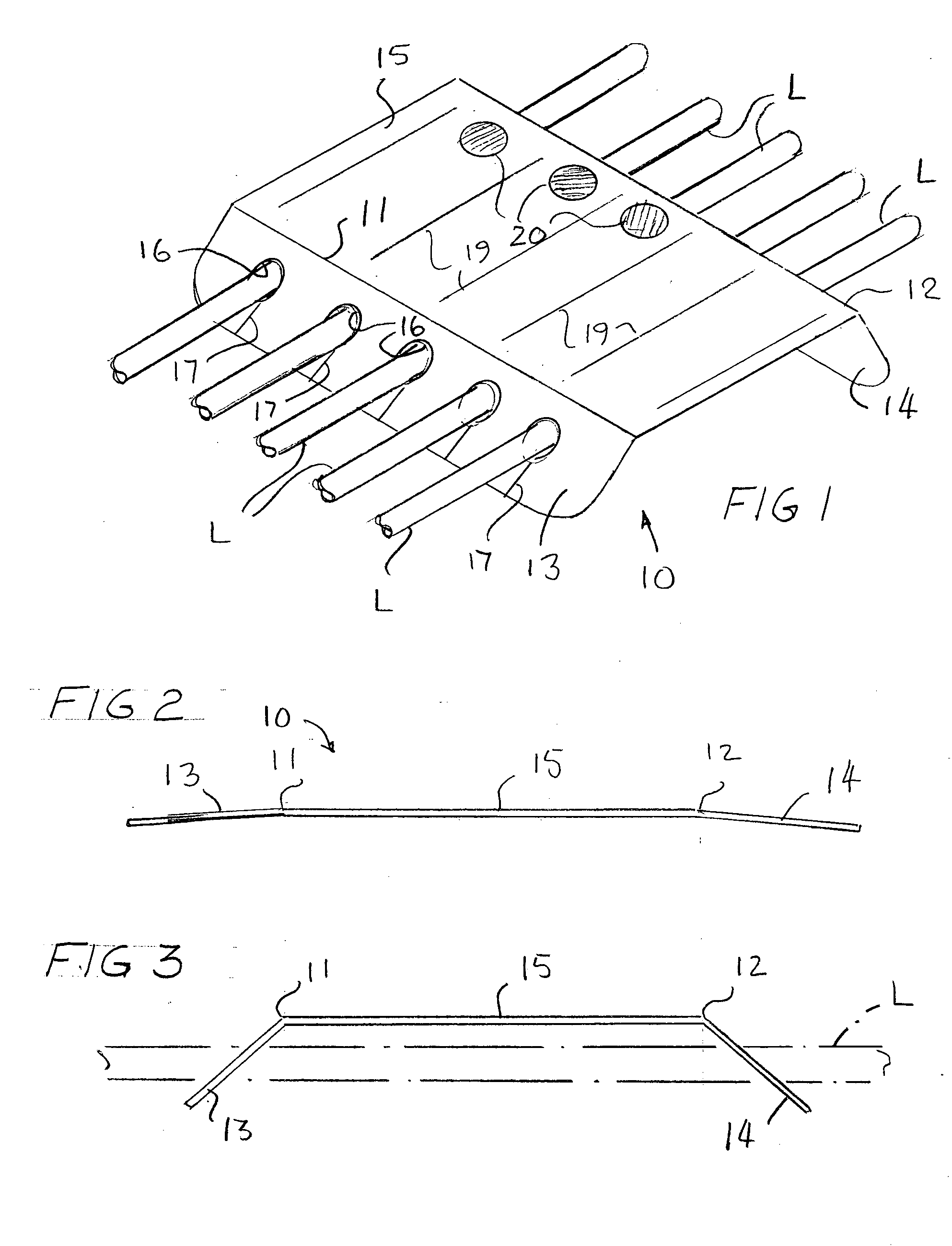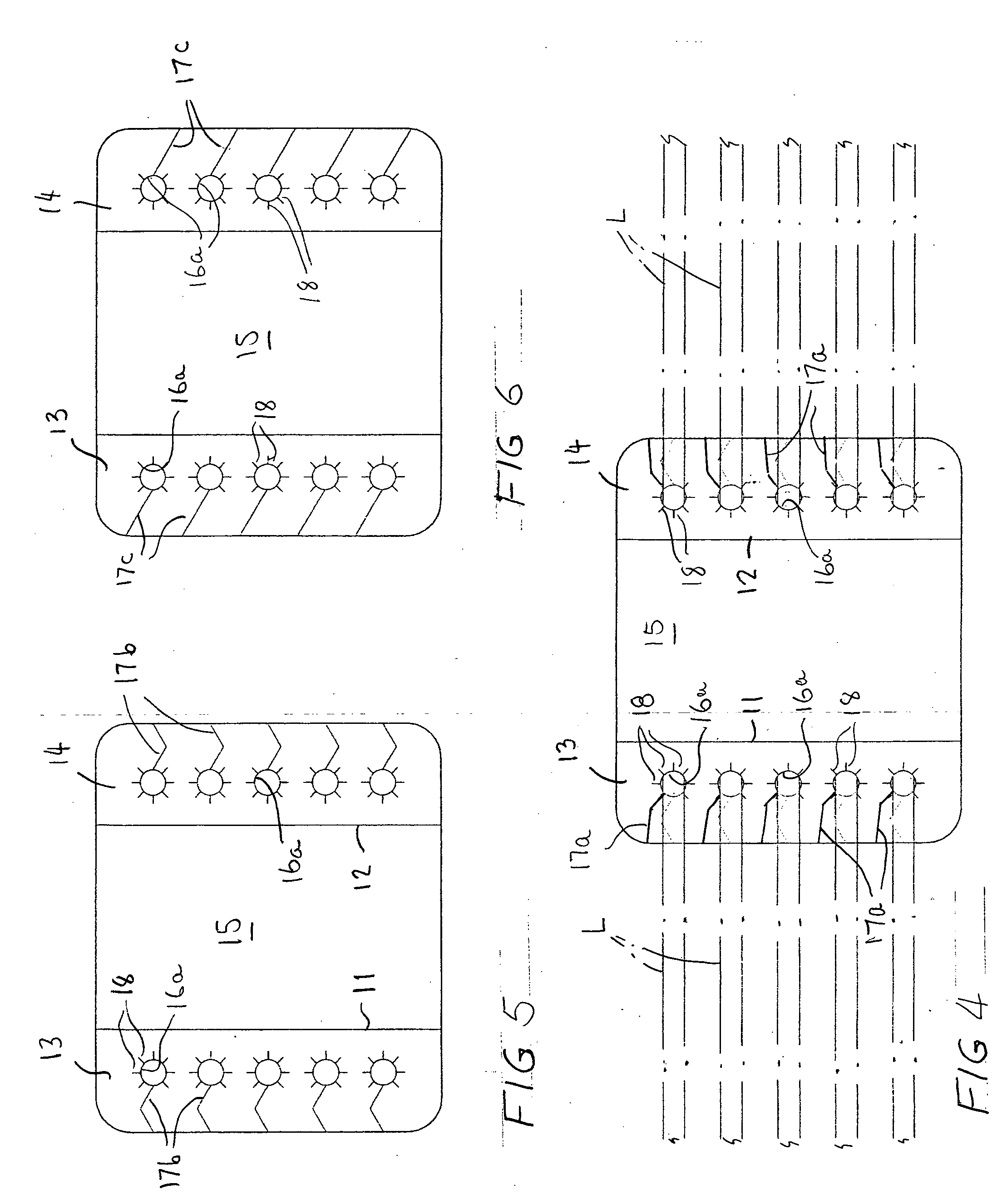Intravenous line holder
a line holder and intravenous technology, applied in the field of medical devices, can solve the problems of increasing the difficulty of work, increasing the cost of medical care, and serious consequences for the health of patients, and achieve the effect of simple construction and convenient us
- Summary
- Abstract
- Description
- Claims
- Application Information
AI Technical Summary
Benefits of technology
Problems solved by technology
Method used
Image
Examples
Embodiment Construction
[0024] With particular reference to FIGS. 1-4, the IV line holder of the invention is indicated generally at 10, and comprises a thin, unitary, rectangular or square sheet of paperboard having sufficient thickness and stiffness only to generally retain it shape and hold the lines attached thereto. A pair of spaced, parallel scores 11 and 12 are formed along opposite sides of the sheet, forming two bendable wings 13 and 14 at opposite sides of a planar central portion 15. A plurality of openings 16 are formed in the wings, with the openings in opposite wings defining aligned pairs of openings. As depicted in FIG. 1, the openings may be made larger than the lines for loosely receiving the lines. Slits or cuts 17 are formed in the edges of the wings, extending from the respective openings through the edge. As shown in FIG. 1, the slits extend through the edge of the wings in line with the lines L held in the respective openings.
[0025] If desired, as seen in FIG. 4, for instance, short...
PUM
 Login to View More
Login to View More Abstract
Description
Claims
Application Information
 Login to View More
Login to View More - R&D
- Intellectual Property
- Life Sciences
- Materials
- Tech Scout
- Unparalleled Data Quality
- Higher Quality Content
- 60% Fewer Hallucinations
Browse by: Latest US Patents, China's latest patents, Technical Efficacy Thesaurus, Application Domain, Technology Topic, Popular Technical Reports.
© 2025 PatSnap. All rights reserved.Legal|Privacy policy|Modern Slavery Act Transparency Statement|Sitemap|About US| Contact US: help@patsnap.com



